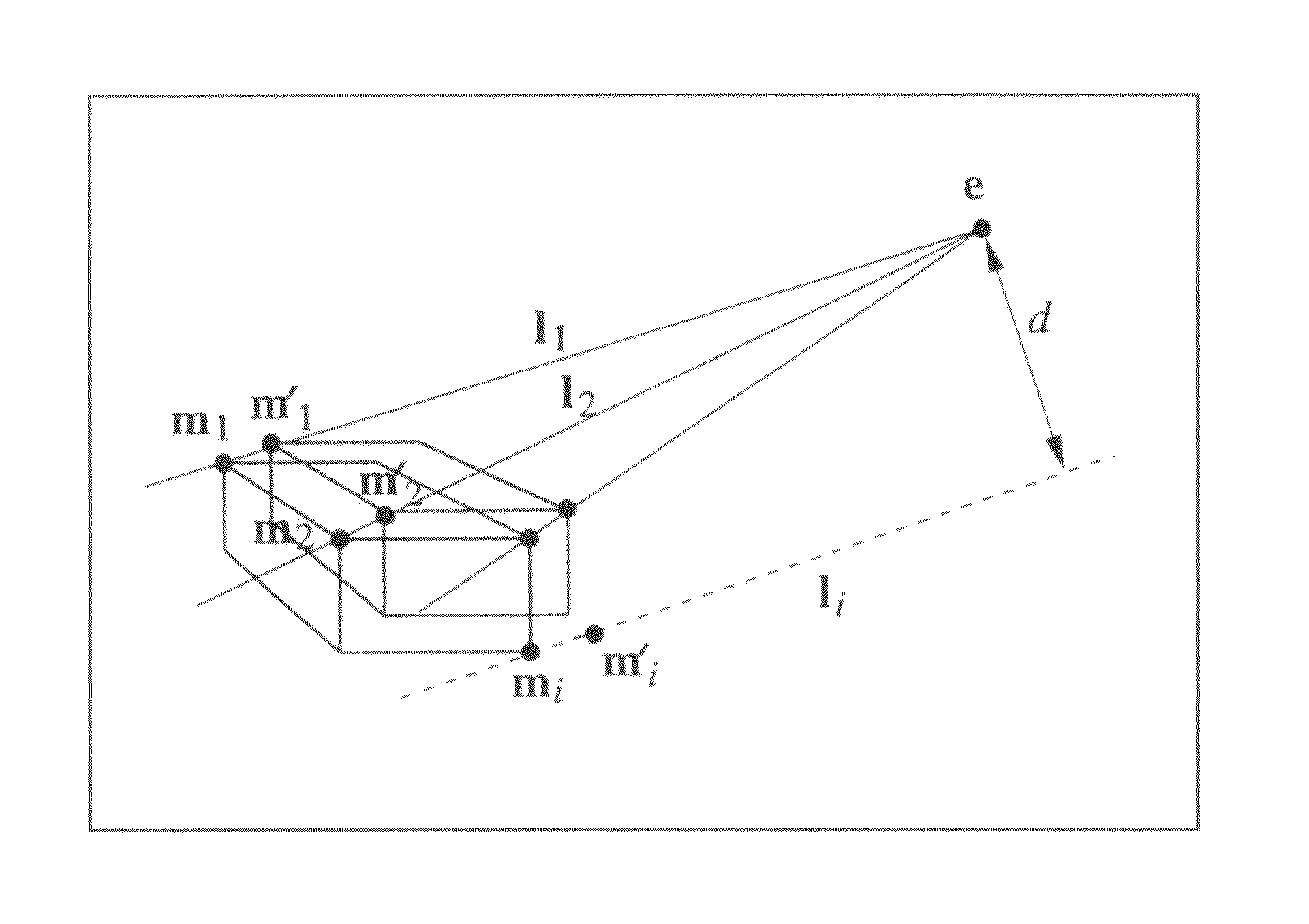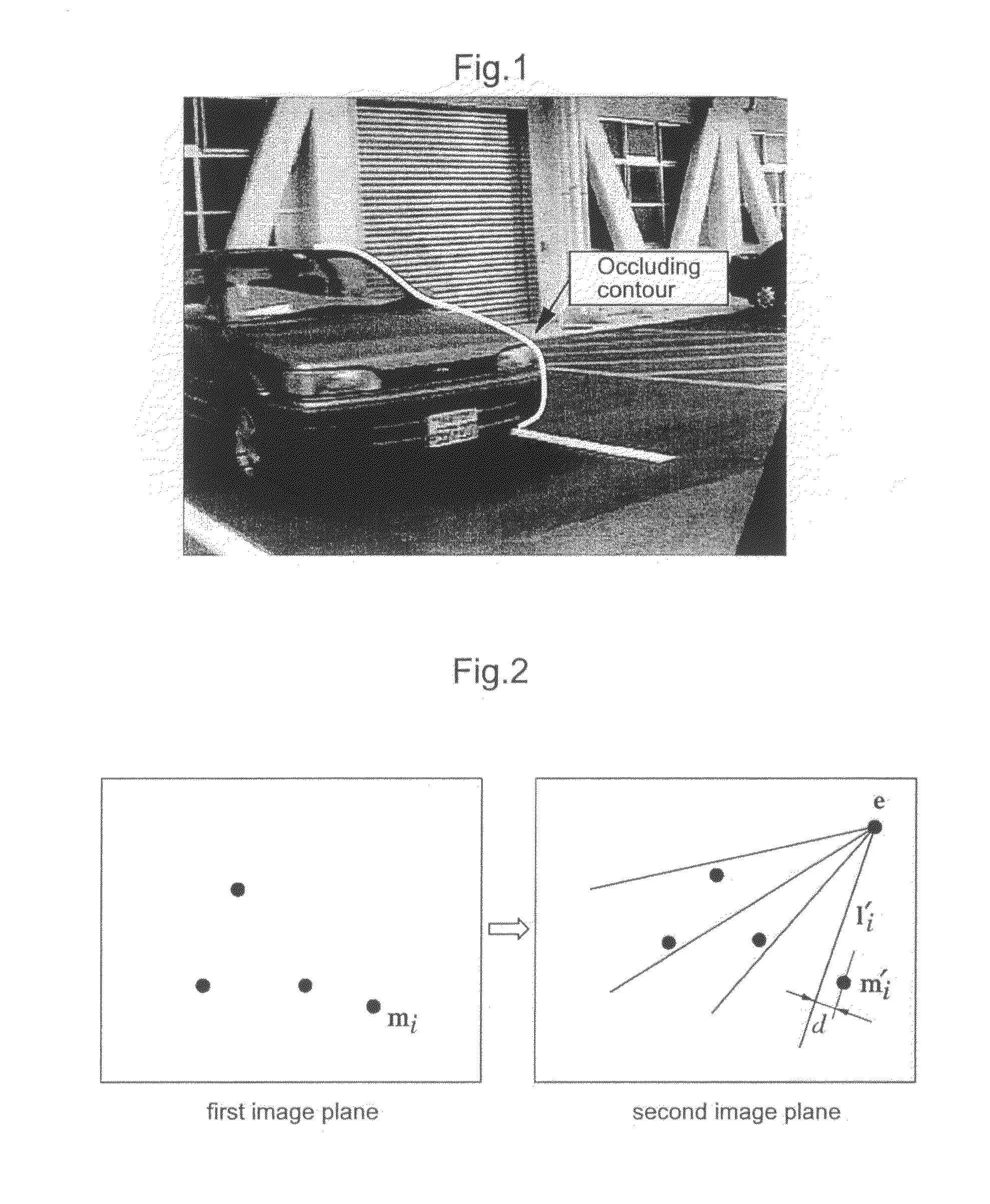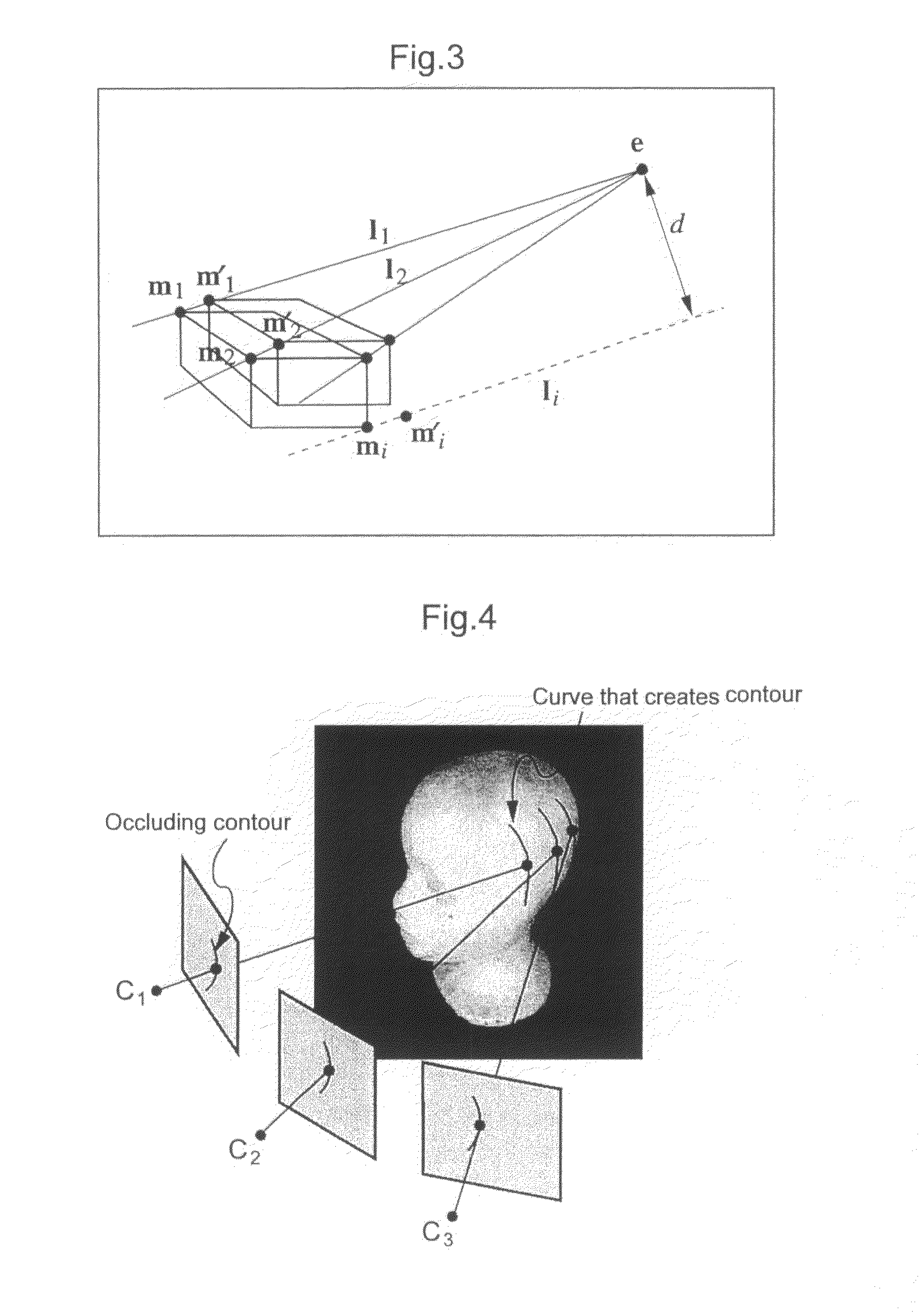Object recognition apparatus and object recognition method using epipolar geometry
a technology of object recognition and epipolar geometry, applied in the field of object recognition technology, can solve the problems of inability to reconstruct the structure of the curved surface portions of objects, inability to accurately mount the camera, and inability to calculate the position coordinates
- Summary
- Abstract
- Description
- Claims
- Application Information
AI Technical Summary
Benefits of technology
Problems solved by technology
Method used
Image
Examples
Embodiment Construction
[0017]First, the theoretical background of the present invention shall be explained.
[0018]In the present invention, occluding contours are used as the main image feature of the object to be detected (hereafter, also referred to simply as “target object”) acquired by the imaging means. The “occluding contours” are, as shown in FIG. 1, contours arising in the image in which the target object occludes the background. Even when a target object has no surface texture, such occluding contours can be observed as long as a luminance difference between the target object and the background is present; therefore, the occluding contours can be used as an image feature for the target object regardless of the presence / absence of textures. However, many objects are made up of curved surfaces; therefore, occluding contours differ from feature points such as corners in that lines are curved, and thus it is difficult to find the correspondence between points on occluding contour curves obtained from ...
PUM
 Login to View More
Login to View More Abstract
Description
Claims
Application Information
 Login to View More
Login to View More - R&D
- Intellectual Property
- Life Sciences
- Materials
- Tech Scout
- Unparalleled Data Quality
- Higher Quality Content
- 60% Fewer Hallucinations
Browse by: Latest US Patents, China's latest patents, Technical Efficacy Thesaurus, Application Domain, Technology Topic, Popular Technical Reports.
© 2025 PatSnap. All rights reserved.Legal|Privacy policy|Modern Slavery Act Transparency Statement|Sitemap|About US| Contact US: help@patsnap.com



